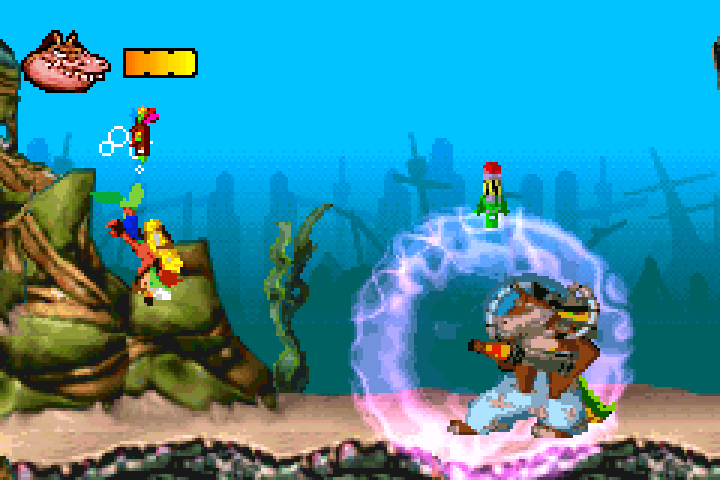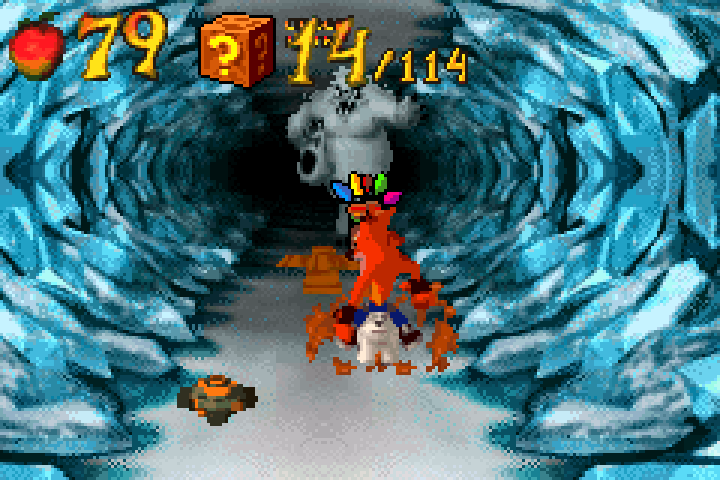- Genre: JRPG
- Platform: Apple Arcade
This is kind of an unusual one that ended up as a lucky confluence of a few factors. I generally don’t play mobile games anymore. After spending a bunch of time working on mobile games around 2011-14, I kind of was tired of the platform other than the necessity of owning a phone. Besides things like Pokemon Go or Fire Emblem Heroes, I really only use my phone as a web surfing device. That said, my experience on developing for Google platforms has always been overwhelmingly negative so as a result I also don’t own an Android device. Tie all that together and I have an iPhone, so when I see a company like Mistwalker release a JRPG through Apple Arcade, I’m somehow ready to enjoy it.
As it turns out, that’s a good thing in this case. Fantasian is a really good combination of things. It’s a classic turn based JRPG, but it throws in some interesting battle mechanics that keep it feeling fresh. The battle mechanics ramp up with some interesting bosses that really lean into on-the-fly strategy over simple number crunching. This is all backed by a diorama-based visual style that really evokes the PS1 era pre-rendered backgrounds in a much higher fidelity fashion.
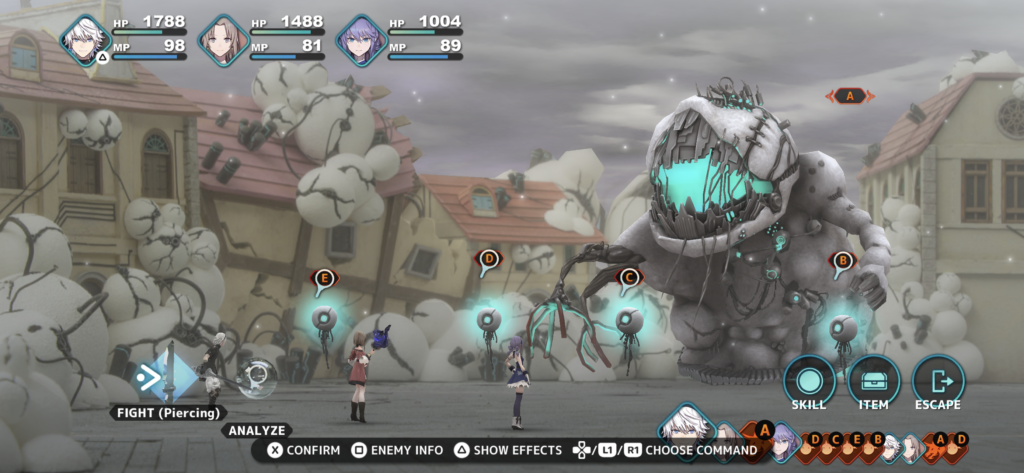
Fantasian is at its core a spiritual sequel to early Final Fantasy games. It has a similarly silly fantasy JRPG plot. It has turn-based battles. It’s got the usual stats and buffs and debuffs typical of the genre. But it feels like more than that. It does some clever things with how it handles combat that set it apart.
The obvious one in-combat is that magic attacks can be curved while also passing through enemies. This puts a tremendous emphasis on positioning and maximizing hits to get through battle. Why take a couple of turns to kill one enemy with basic attacks when you can kill three enemies in the same amount of time with some pass through magic? This also allows for some interesting defensive mechanisms where enemies can activate a shield that blocks this pass through. As a result, bending around them to maximize your output becomes even more important. It’s a clever core mechanic that is both easy to use and incredibly effective, giving a nice layer of strategy to what are generally pretty basic trash fights.
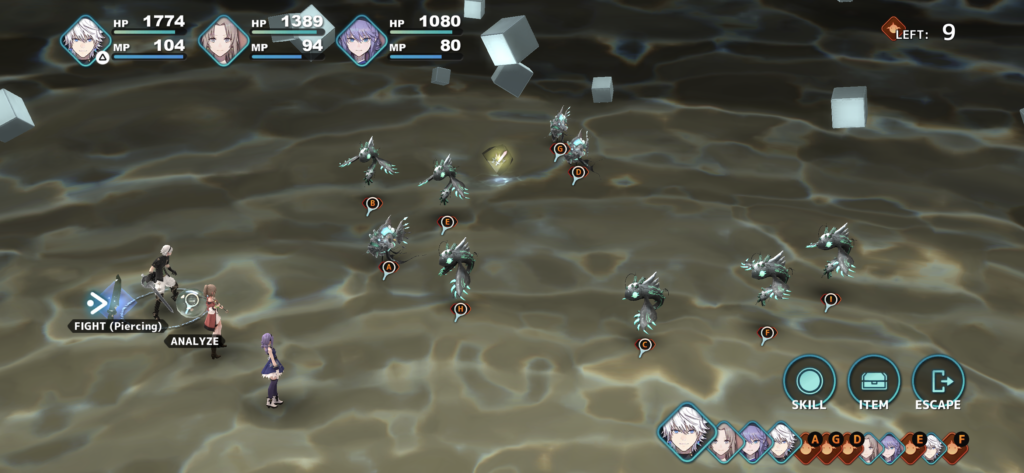
There’s also a system called the Dimengion system that really plays into this. Once you’ve seen an enemy at least once, you can avoid it in random battles – at least temporarily. Those random battles are instead stored in a Dimengion, allowing you to cache up to 30 enemies to fight all at once. This brings a two-fold benefit. For one thing, the pace of the game is tremendously faster when you don’t have to go through as many battle start and finish transitions. However, the big benefit is that it’s a lot quicker to clear a bunch of trash at once with magic than it is battling them one at a time.
There’s been games in the past decade or so that have really tried to mitigate the typical JRPG grind – for example, Bravely Default letting you set the random battle chance – but this may be one of the most effective ones that I’ve seen. Battling a large group at once is just more fun than taking on smaller fights. Killing five or six things at the same time with a well curved fire spell is fun. Getting half a level at one time because you just cleared out 30 enemies is fun. Running through an entire world map screen without having to stop ten times for battles is fun. Ultimately, that increased level of fun ends up playing into the core mechanics of the battle anyway, so it reinforces the system while increasing engagement, which is always a win for the player.
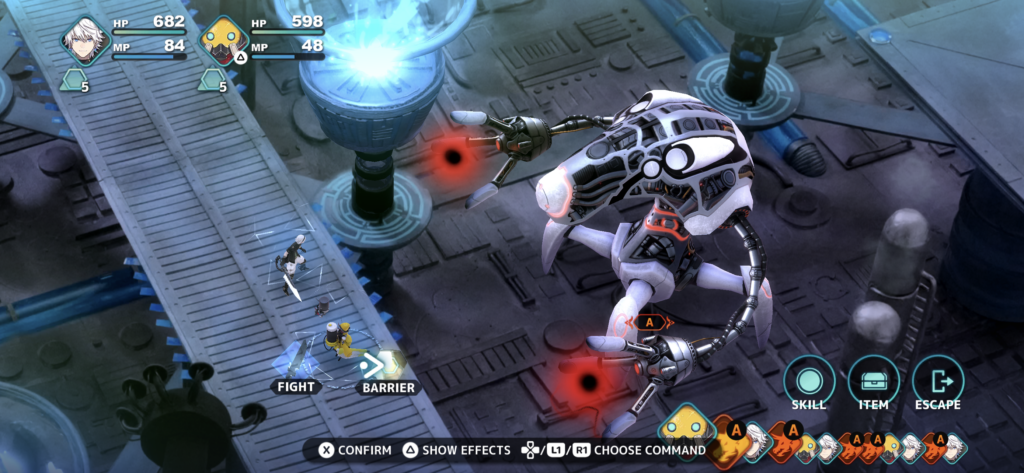
The boss fights themselves are also setup in a way that encourages strategy with a mechanic that is specific to the fight that changes it in a way that discourages zerg rushing, and encourages careful planning of damage output. This works better in some cases than others, but I’ll outline a couple of examples.
In the fight above, the boss will occasionally go into a charge mode where his arms prepare lasers with large damage output. You’ve got two choices – use your turn to keep damaging the main boss and try to tank through the damage or damage the arms before they fire, thereby eliminating the threat. The more effective boss fights in Fantasian all work like that. Some mechanic will give you a few turns to react and let you take the choice of shifting your damage output in a way that prevents the boss’ attack, or try to push through – especially if you’re near the end of the fight.
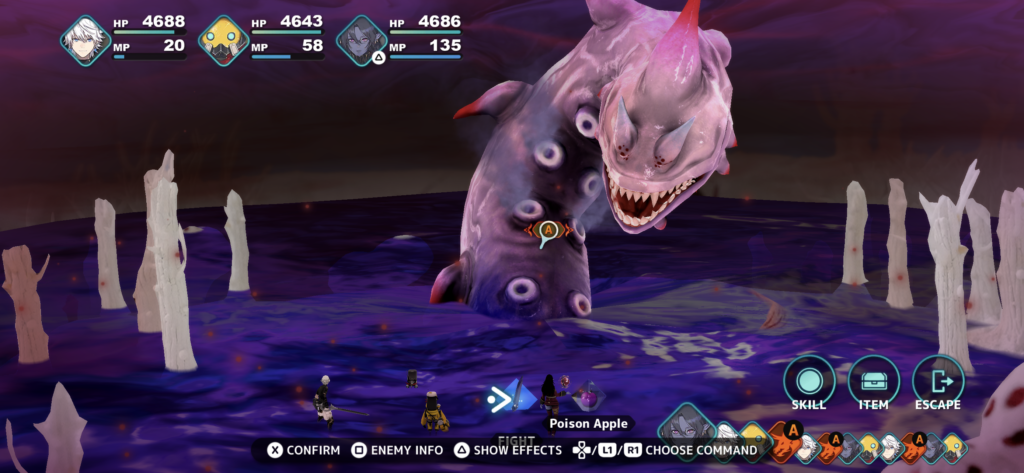
This example above is one that didn’t work as well. Once this boss reached 50%, it throws a permanent poison field effect down, causing permanent poison to the party. The boss then eats the poison off the party members, and after a few turns throws a large AoE damage. You can only really tank through the damage, putting your party in a heavy heal rotation.
….unless you equip poison nullification gems, thereby eliminating the entire mechanic.
The boss fights that are trivialized via passive mechanics tended to be the ones that were less fun. You’d go in, sometimes win, and sometimes lose. If you lose, you now know the mechanic to watch for, equip to avoid it, and cheese your way through. Luckily, unlike Persona 5, this was pretty rare and wasn’t a thing that every boss had occur.
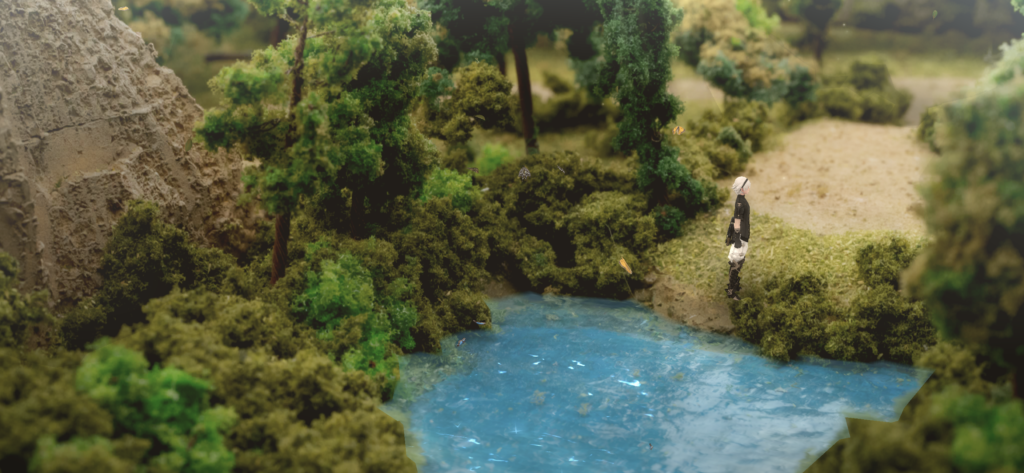
This game was a tremendous treat, or at least the first half of it was. The second half is supposed to be out by the end of the year, and move in more of a pseudo open-world quest-based direction. Given what I’ve played so far, I’m definitely looking forward to getting my hands on more Fantasian. I’d be lying if I said that I wasn’t hoping to see this come out in physical form on a more accessible platform once that second half is done, but until then if you’ve got an Apple device, this is the kind of content that proves the value of Apple Arcade, and is a must play.



